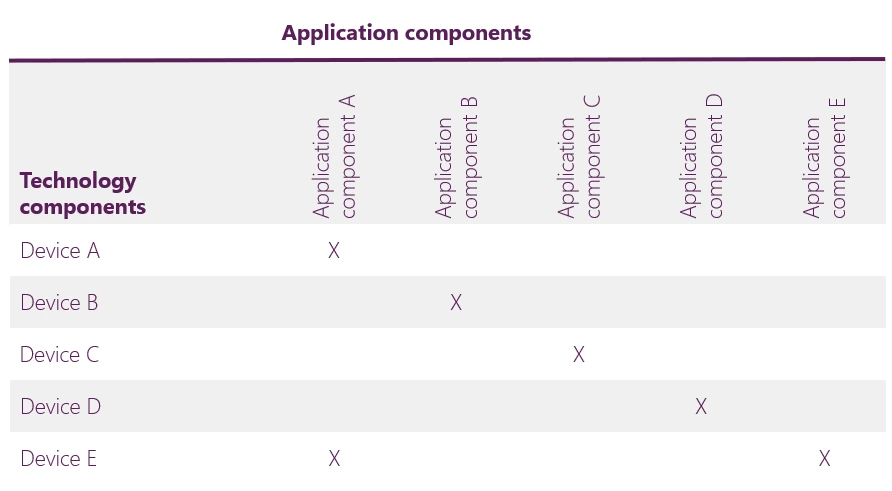Once the Technology Portfolio Catalog has been created, attention can be turned to creating a Technology/Application Matrix. This cross-mapping shows the relation between technology components and application components used within the organization. A cross-mapping is a relationship between two variables that shows the cause-and-effect relationship between them. With the right architecture tool, cross-mapping between two maps is easy.
Applying the method
To create a Technology/Application Matrix, the technology components must be mapped to the previously inventoried application components.

For example, in the figure above, we can see that Device E has a relationship with two application components, A and E. Using the insight gained after creating the aforementioned matrix, it is possible to further investigate whether it is desirable for both Application components A and E to be available through the deployment of Device E. After doing the research, a first observation could be that Device E is the replacement for Device A. Another observation might be that Application component E is highly dependent on Application component A. It is even possible to make a third observation, namely that the first two observations are both applicable and accurate.
Many scenarios are possible, and it is useful to use the insights provided by a Technology/Application Matrix. For instance, these insights can be used to investigate the reasons for striking or anomalous findings.
More information
For additional information about creating a Technology/Application Matrix, please refer to Chapter 8, Section 8.2.1.5, of my book Getting Started with Enterprise Architecture.
